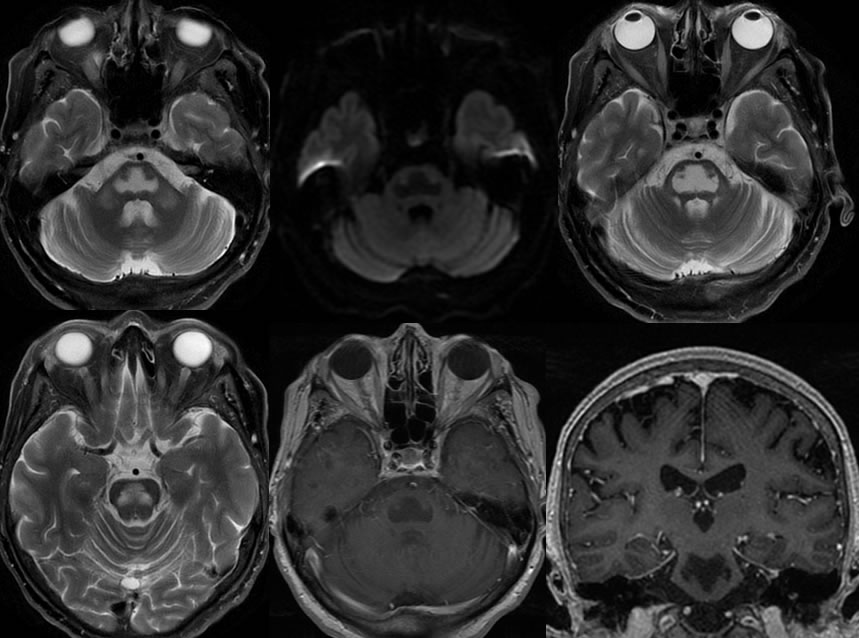

Central Pontine Myelinolysis
Findings:
A well-defined trident shaped focus of marked T2 hyperintensity following nearly CSF flow signal symmetrically involves the central pons without mass effect or abnormal enhancement. There is no restricted diffusion in this region. Symmetric signal abnormalities are also present within the bilateral brachium pontis.
Differential Diagnosis:
Osmotic demyelination, remote infarct, small vessel disease, demyelinating disease of other cause (MS)
Discussion:
The symmetric trident shape of this lesion is characteristic for central pontine myelinolysis and would be very atypical for small vessel disease or previous infarct, and MS would not typically be this symmetric. The more current term for this process is osmotic demyelination syndrome (ODMS). While the precise mechanism is unknown, any osmotic stress may cause this process with myelin damage and cell death. It classically results from too rapid correction of hyponatremia in malnourished and/or alcoholic patients, but may also be seen in the setting of azotemia, hyperglycemia, hypokalemia, and ketoacidosis. Comorbidities including liver, renal, burns, postop, transplants, malnutrition, and pituitary insufficiency may exacerbate this condition. The patients present initially with seizures, altered mental status, pseudobulbar palsy, dysphagia, and dysarthria. The prognosis has a wide spectrum from complete recovery, minimal deficits, to a locked in state with coma and death.